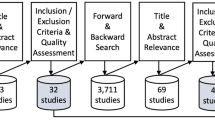Abstract
The Herfindahl–Hirschman Index (HHI) that measures the level of concentration in a given industry is a well-known and commonly accepted one indicator of market competition. On the basis of European Union Commission guidelines and HHI values, the given industry can be characterized as unconcentrated, moderately concentrated or concentrated. The paper is given over to a sensitivity analysis of HHI values, which allows simulations of concentration changes in relevant markets in order to assess new entries to the market. This paper derives relationships that allow the setting of boundaries in which the characteristic of industry concentration remains the same. Derived relations of HHI sensitivity analyses can be successfully used as a tool in assessing the entry of new subjects into any industry. In the case of economies with a smaller number of operating undertakings, it may be difficult to use the analysis based on the methodology of the European Commission. Therefore, the authors propose an approach of setting boundary ranges to characterize the concentration of the industry. Also, empirical analysis of the Slovak insurance industry, in which 23 insurance companies currently operate, was conducted on the basis of the European Commission methodology.
Similar content being viewed by others
Notes
The term ‘competition’ is considered to be a set of certain conduct rules for business and the state acting on a given market, in which compliance is a prerequisite for further economic development (Decree No. 204/2009 of the Antimonopoly Office of the Slovak Republic 2009).
The term ‘competitive environment’ is understand to be the environment within which several subjects operate and none of the actors has a supply power large enough that it somehow controls and sets other players at a disadvantage (Fendeková and Fendek 1997).
Market share may have values \(0 < s_{i} = 1\). The sum of market shares of all entities operating on given market is equal to one.
Special circumstances are listed in the Guidelines on horizontal mergers assessed under the Council Regulation on the control of concentrations between undertakings (Official Journal of the European Union 2004).
When applying FTC classification in Eq. (8) the following values of \({ HHI} = 0.15\) and \({ HHI} = 0.25\) are used.
References
Analysis of the Slovak Financial Sector for 2012 (2013) National Bank of Slovakia. http://www.nbs.sk/_img/Documents/_Dohlad/ORM/Analyzy/protected/AnalyzaSFS2012.pdf. Accessed 14 June 2013
Bajo O, Salas R (2002) Inequality foundations of concentration measures: an application to the hannah-kay indices. Span Econ Rev 4(4):311–316
Bikker JA, Haaf K (2002) Measures of competition and concentration in the banking industry: a review of the literature. Econ Financ Model 9(summer):53–98
Brezina I (1994) On an estimation of industry concentration development. Ekonomicky Casopis 42(3): 218–229
Decree No. 204/2009 of the Antimonopoly Office of the Slovak Republic (2009) http://www.antimon.gov.sk/data/files/166_decree-no-204_2009.pdf. Accessed 1 June 2013
Fedderke J, Szalontai G (2005) Industry concentration in South African manufacturing: trends and consequences 1972–1996. World Bank Africa Region Working Paper Series No. 96
Fendeková E, Fendek M (1997) Quantitative analysis of the state of competition in the furniture branch in the slovak republic. Ekonomicky Casopis 45(10):776–799
Golan A, Judge G, Perloff JM (1996) Estimating the size distribution of firms using government summary statistics. J Ind Econ 79(1):69–80
Hannah L, Kay JA (1977) Concentration in modern industry: theory measurement and the UK experience. Macmillan, London
Herfindah OC (1950) Concentration in the US Steel Industry. Columbia University
Hirschman AO (1945) National power and the structure of foreign trade. University of California Press, Berkeley
Horizontal Merger Guidelines (2010) http://www.justice.gov/atr/public/guidelines/hmg-2010.html#5c. Accessed 1 September 2013
Horvat J (1970) Suggestion for a comprehensive measure of concentration. South Econ J 36(4):446–453
Iduñate PGA (1990) Un enfoque para medir la concentración industrial y su aplicación al caso de méxico. El Trimestre Económico 57(2):317–341
Kate AT (2006) The dominance index in mexican merger control: does it perform better than the hhi? Antitrust Bull 51(2):383–409
Khurshid SMZ, Rohit, Singh GP (2009) Levels and trends of competition among the mutual funds in india. Res J Bus Manag 3:47–67
Kwoka JE (1977) Pricing under federal milk market regulation. Econ Inq 15:367–384
Leach DF (1992) Absolute vs. relative concentration in manufacturing industry 1972–1985. S Afr J Econ 60(4):386–400
Mare DC (2005) Concentration, specialization and agglomeration of firms in New Zealand. In: MOTU working paper 05–12. MOTU Economic and Public Policy Research, Wellington
Merger Guidelines (1968) http://www.justice.gov/atr/hmerger/11247.htm. Accessed 1 September 2013
Merger Guidelines (1982) http://www.justice.gov/atr/hmerger/11248.htm. Accessed 1 September 2013
Naude CM (2006) Measures of manufacturing industry concentration—implications for South Africa. In: Accelerated and shared growth in South Africa: determinants, constraints and opportunities, Johannesburg, South Africa, pp 18–20. October 2006
Official Journal of the European Union (2004) C 31/03
Premiums Written (2013) Slovak insurance association. http://www.slaspo.sk/en/13075. Accessed 2 June 2013
Rosenbluth G (ed) (1955) Measures of concentration. Business concentration and price policy by National Bureau of Economic Research. Princeton University Press, Princeton
Author information
Authors and Affiliations
Corresponding author
Rights and permissions
About this article
Cite this article
Brezina, I., Pekár, J., Čičková, Z. et al. Herfindahl–Hirschman index level of concentration values modification and analysis of their change. Cent Eur J Oper Res 24, 49–72 (2016). https://doi.org/10.1007/s10100-014-0350-y
Published:
Issue Date:
DOI: https://doi.org/10.1007/s10100-014-0350-y




